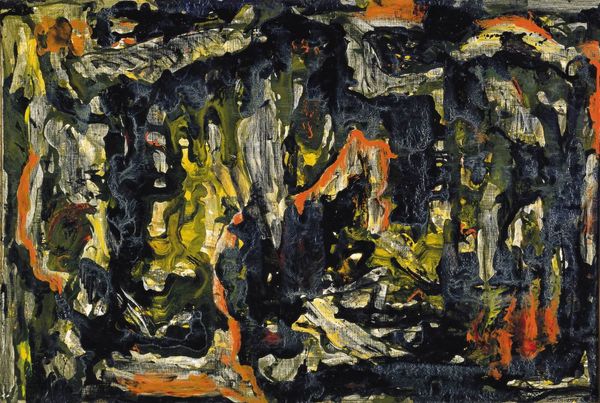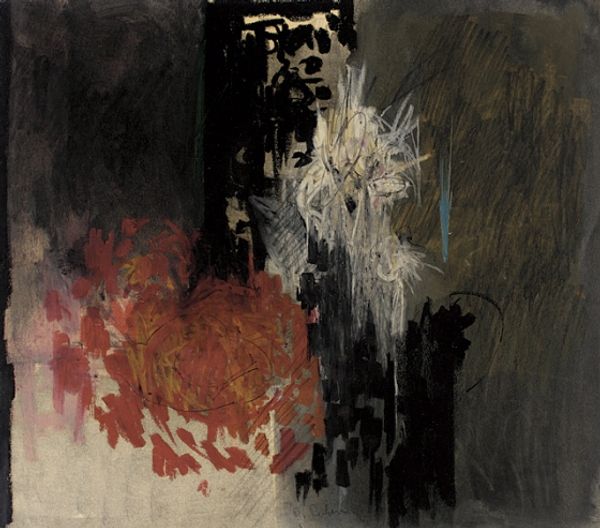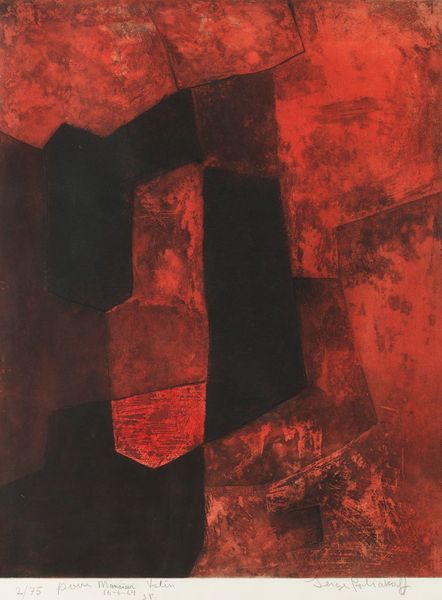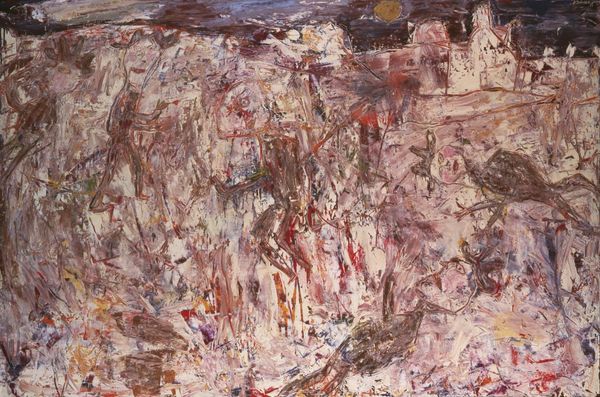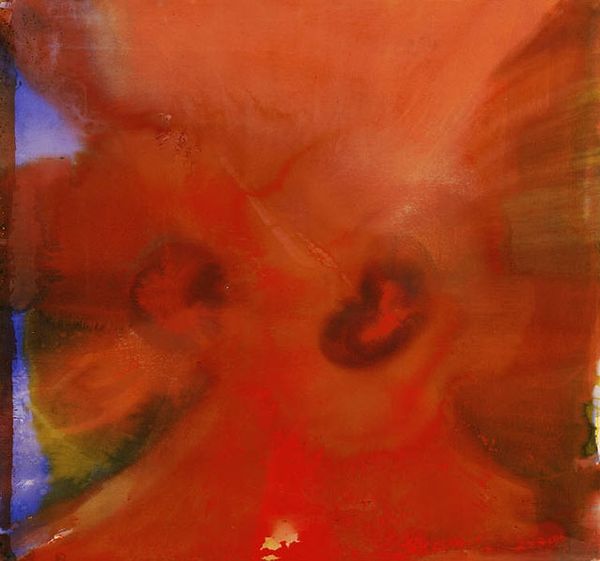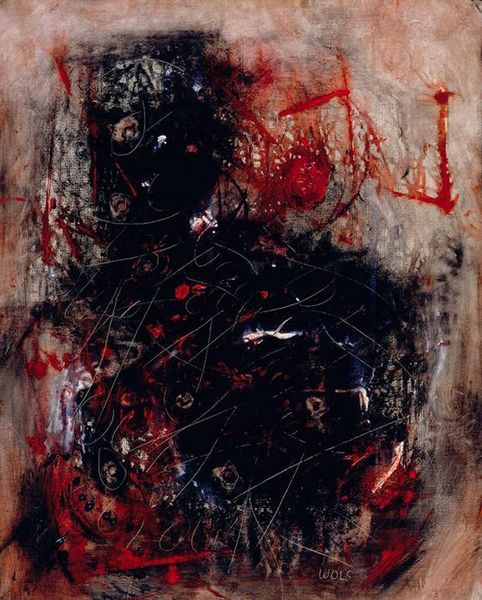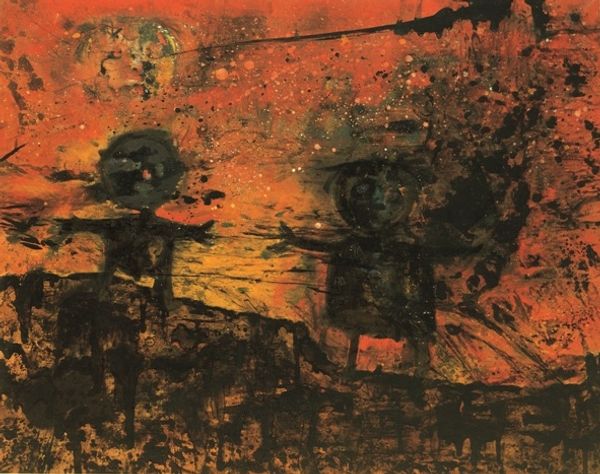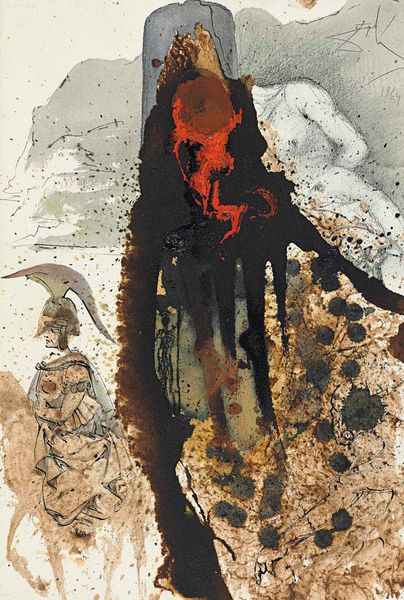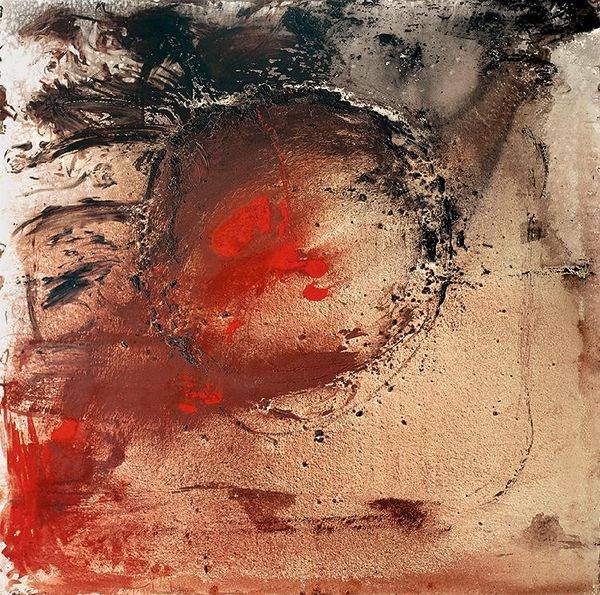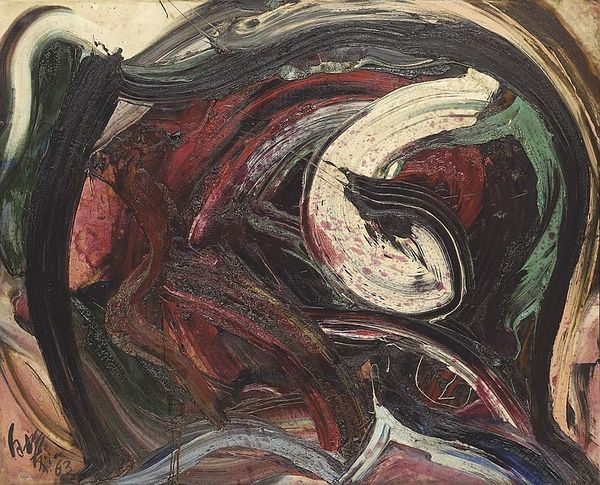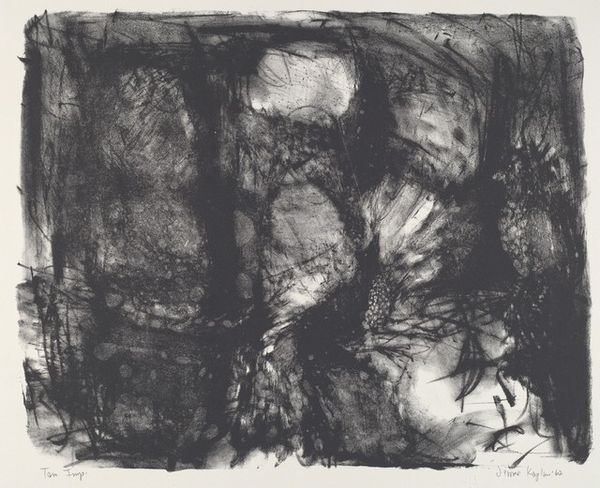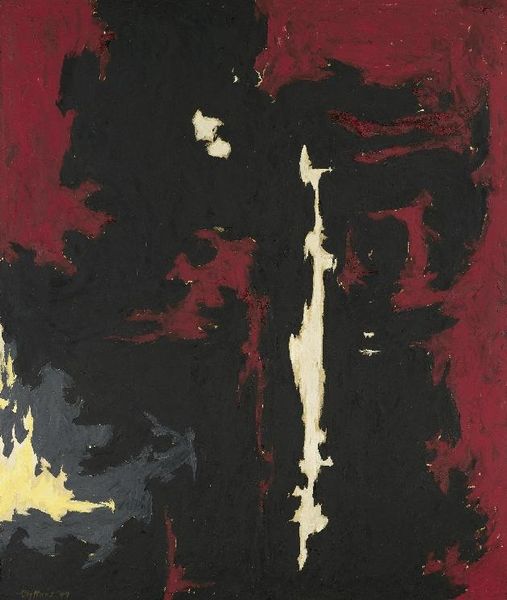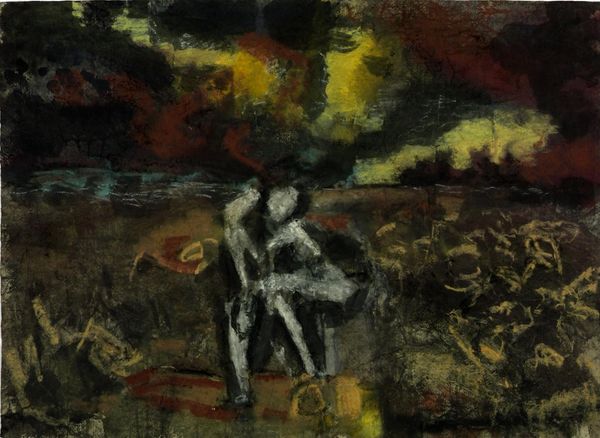
Copyright: Behjat Sadr,Fair Use
Editor: This is Behjat Sadr's "Untitled" from 1956, an oil painting dominated by vibrant red and somber grays. It evokes a feeling of both intense energy and constraint, like something struggling to break free. How do you interpret this work? Curator: Seeing this, I'm struck by the socio-political context in Iran at the time. Sadr was a pioneer, a woman working in a male-dominated art world, amidst a society undergoing rapid modernization and facing Western influences. Do you see the tension in that? The way the vibrant red is almost caged by the blacks and grays? Editor: I do, now that you mention it. The red feels almost rebellious, like a cry for attention against a more oppressive backdrop. Curator: Exactly. The Abstract Expressionist style itself was a form of rebellion against traditional artistic constraints, a movement largely shaped by male artists. How might Sadr, as a woman in Iranian society, have used abstraction to express her own specific experience of marginalization and liberation? Editor: So, the abstraction isn't just about form, but about finding a visual language to express complex, sometimes hidden, emotions and experiences related to her identity and position? Curator: Precisely. Consider the limitations placed on women’s self-expression then. Abstraction offered a space where Sadr could explore those feelings indirectly, through color and form, creating a powerful visual statement about female agency and resilience. Do you think the work would be seen differently if we knew it was made by a man? Editor: Definitely. I’d probably focus more on the formal qualities, less on the potential social commentary. This makes me see the painting with fresh eyes. Curator: And hopefully encourages us to ask more critical questions about the narratives surrounding artists and their work. What appears abstract is, often, profoundly personal and political. Editor: I'll remember to dig deeper! Thanks.
Comments
No comments
Be the first to comment and join the conversation on the ultimate creative platform.
